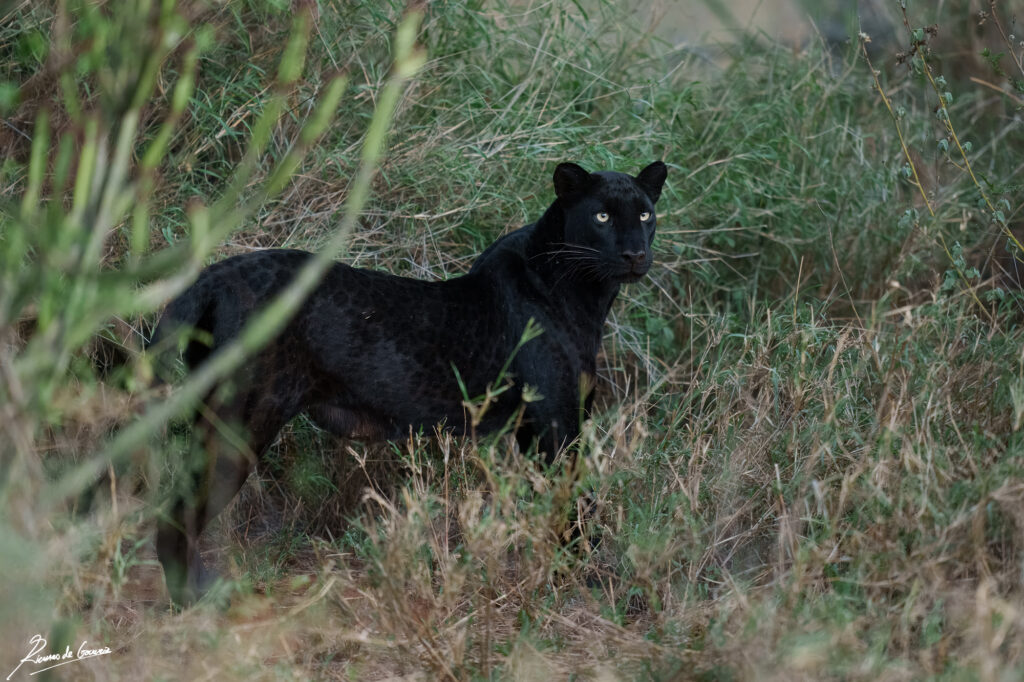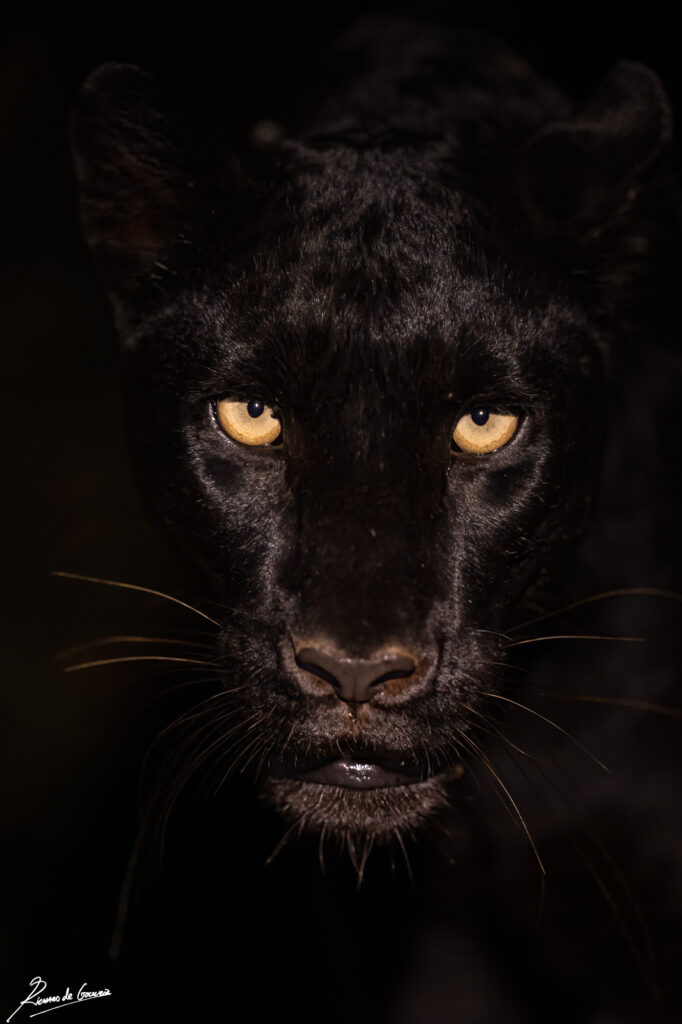Giza: Tracking Laikipia’s Rare Black Leopard in the Wild
Richard Gouveia • 03/18/2025
SHARE
The plane flew in and landed on the plateau above Laikipia, with the vast wilderness stretching out before us. From there, it was an hour-long drive to camp, a journey that slowly revealed the rugged beauty of the landscape. We left the plateau behind, winding our way down past striking rocky outcrops and the river that snaked through the valley below. By the time we reached camp, we were warmly welcomed into what was a humble yet deeply authentic space. It was the perfect base for what promised to be an extraordinary adventure.
Lunch was ready, but our excitement had already soared. We were eager to set off on our first game drive, venturing into a new wilderness filled with creatures both familiar and rare. There were Grevy’s zebra, striped hyena, and most importantly, the reason for our visit, Giza, the elusive black leopard.
As we headed out on our first drive, it did not take long before we encountered a mixed herd of plains zebra and Grevy’s zebra. The contrast between the two was striking. The Grevy’s were noticeably larger, their stripes finer and more intricate, reminiscent of fingerprints. Seeing them for the first time, their bold patterns so distinct from the more common plains zebra, was a moment of quiet awe.
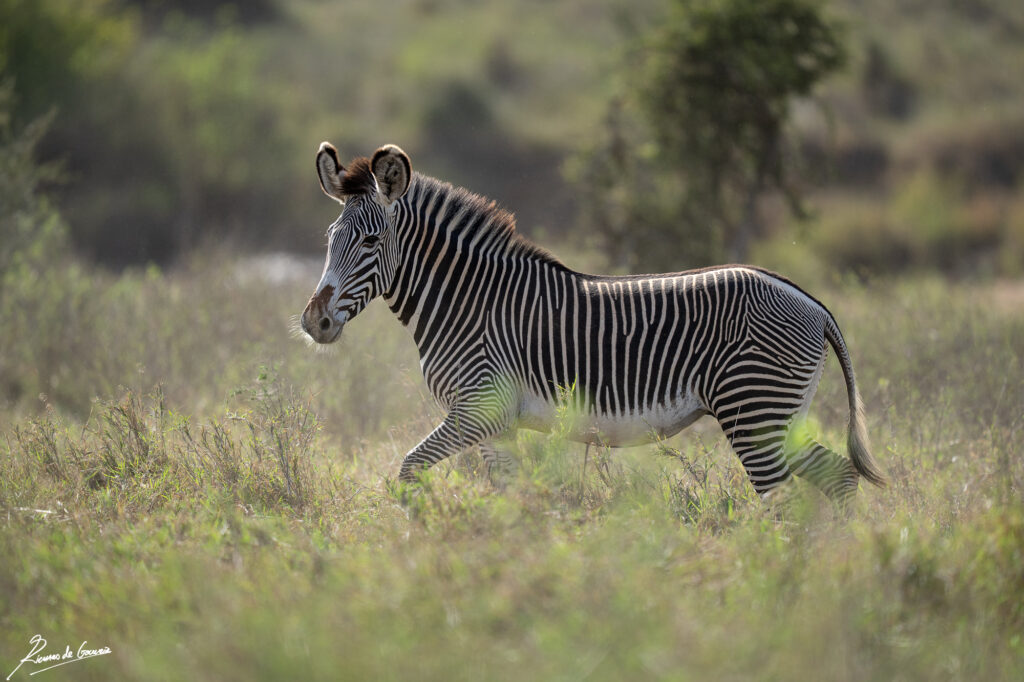
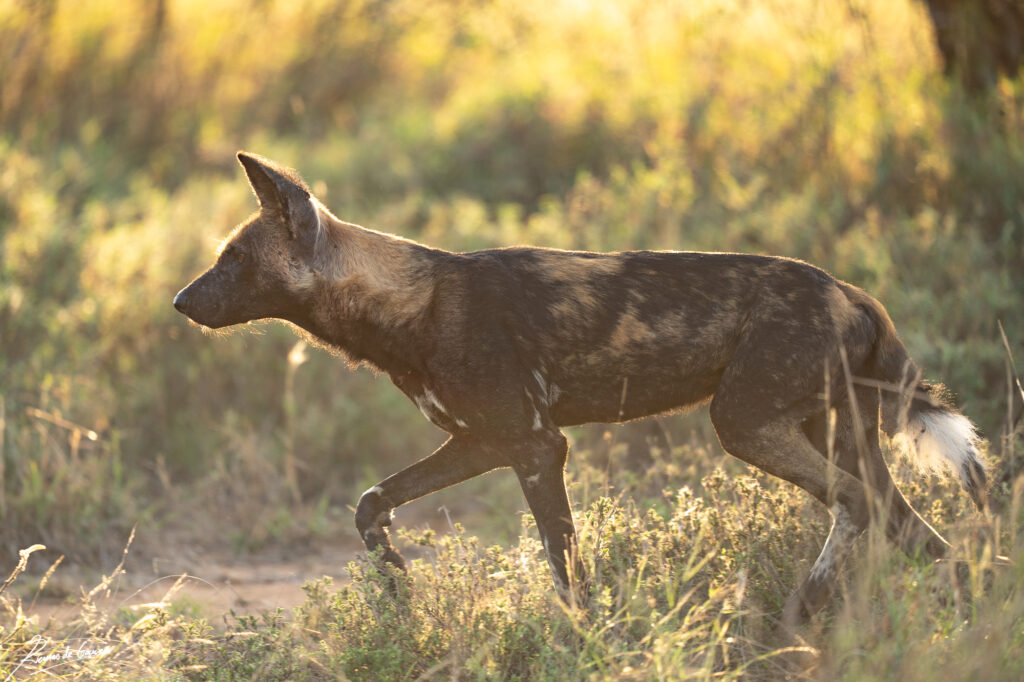
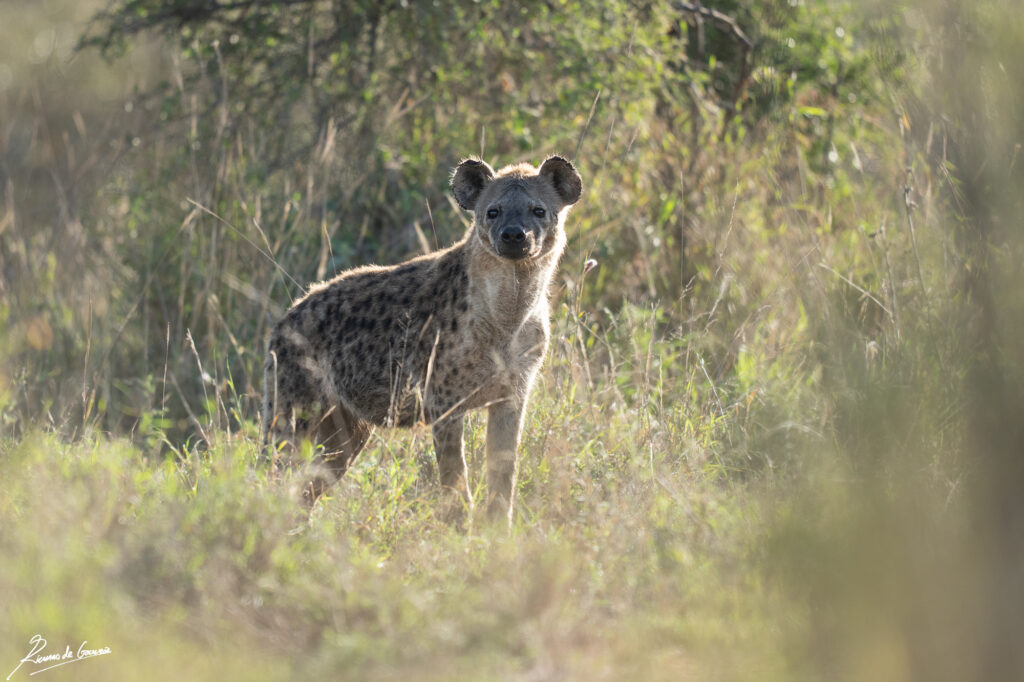
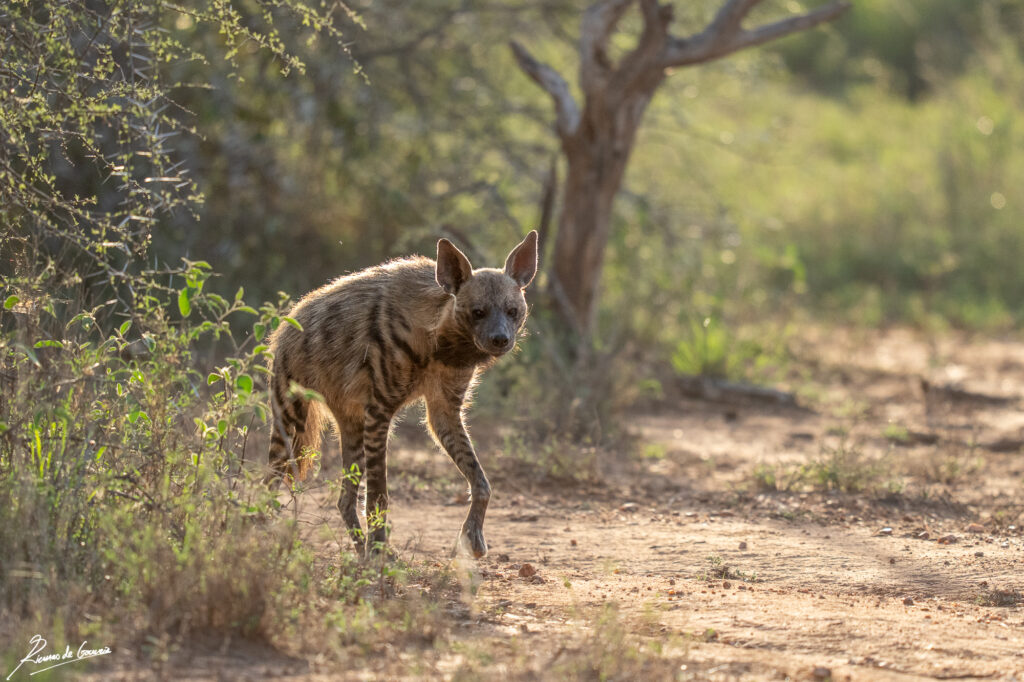
The afternoon drifted into evening, and just as the sun began to dip below the horizon, a call crackled over the radio. A striped hyena had been spotted on the move. We rounded a corner, and there it was, standing in the middle of the road, staring directly at us. The hyena paused only briefly before slipping into the undergrowth, its movements ghostly and fleeting. We followed, catching glimpses as it wove through the thickets, disappearing into the night in search of food.
As darkness settled, we enjoyed our sundowners and prepared for what we hoped would be our first sighting of Giza. We drove toward an area where she was known to cross into the reserve. Then, suddenly, there she was.
A black silhouette against the pitch-dark night.
The sight took our breath away. In the dim glow of the spotlight, she moved with effortless grace, her form barely distinguishable from the surrounding darkness. We scrambled to position the light just right, not too bright as to disturb her, but enough to reveal her mesmerizing beauty. Photographing her was a challenge, with the black-on-black contrast proving difficult, but there were moments when I simply put the camera down. I just watched her, captivated by the sheer rarity and elegance of this melanistic marvel.
That night marked the beginning of an incredible sequence of encounters. Over the next seven days, we had five nights of sightings, each one revealing something new about her behavior and presence in this wilderness.
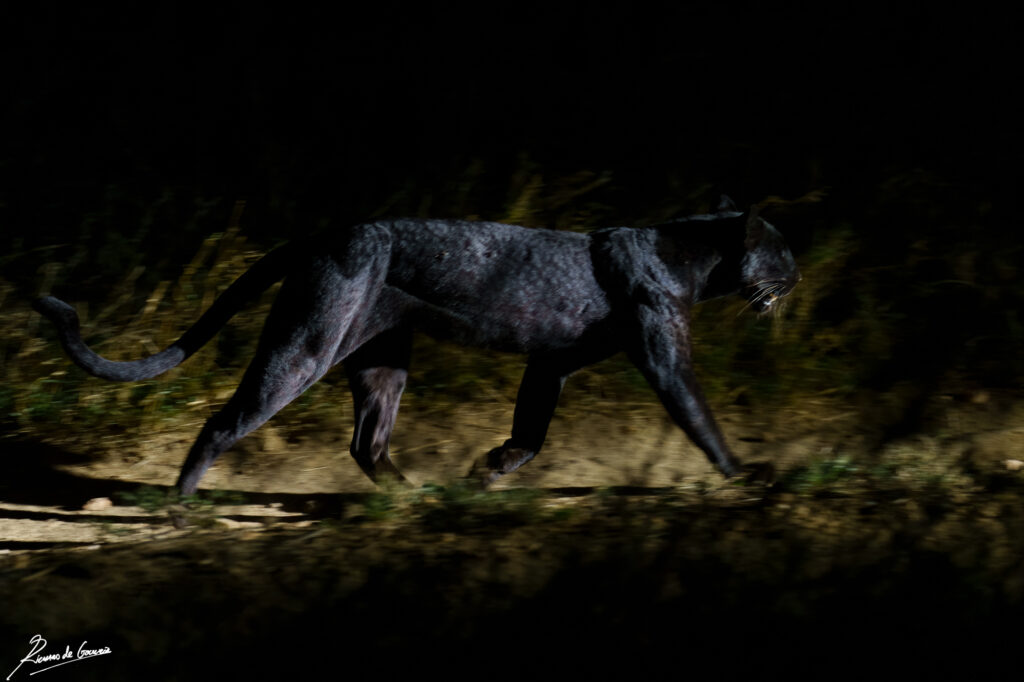
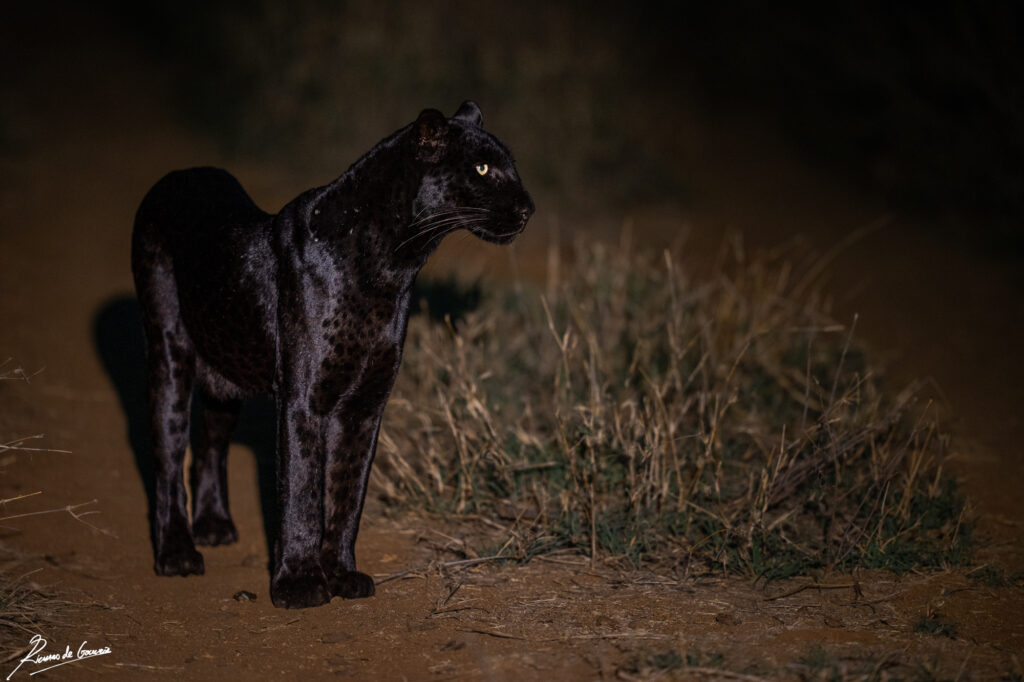
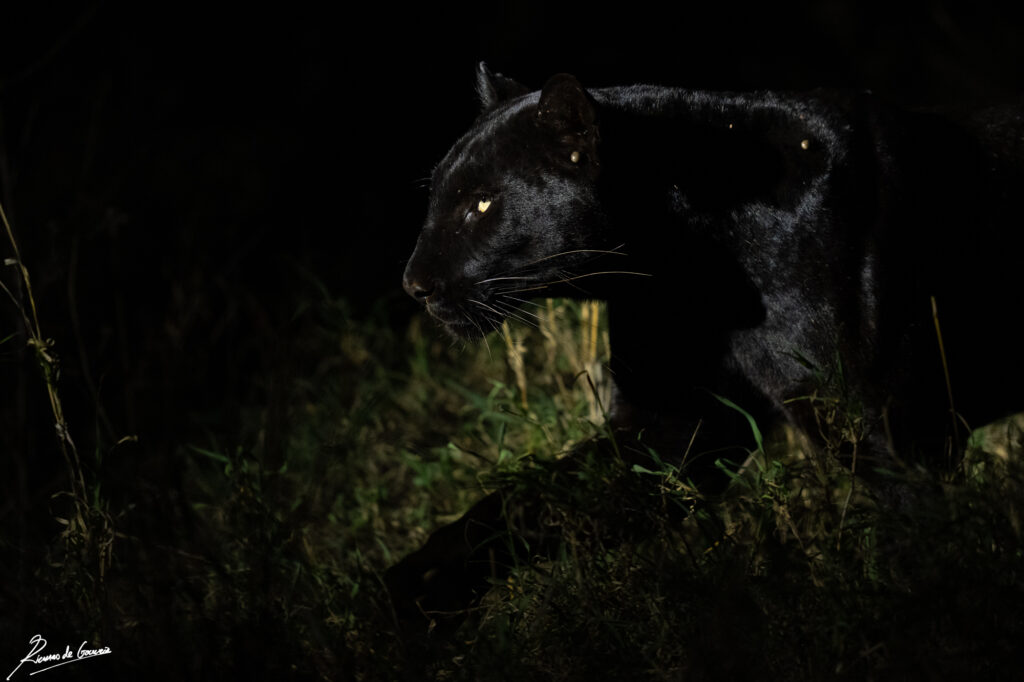
One evening, she appeared earlier than expected, still bathed in the fading daylight. For the first time, we saw something extraordinary. Her rosettes shimmered beneath her black coat. Under the sun’s last golden rays, the hidden patterns emerged, a ghostly contrast against her dark fur. It was a revelation, a reminder that beneath her unique coloring, she was still a leopard, adorned with the same stunning markings as her spotted kin.
On our last night, the experience reached its climax. We were following her through the darkness when she suddenly slowed, her body low and her movements deliberate. She was hunting.
We switched off all lights. The full moon cast a silver glow, faintly illuminating the landscape. Through binoculars, we watched as Giza stalked closer to her prey, her silhouette barely discernible in the long grasses. The tension was electric. Then, the silence shattered.
A rustling in the grass. A flurry of movement. A sudden stillness.
We flicked the spotlight back on, and there she stood, a tiny dik-dik clutched in her jaws. Proud and triumphant, she walked right past our vehicle, her prize swinging gently as she moved. She circled back more than once, almost as if she was showing off her success. Then, with quiet confidence, she disappeared into the night, returning to feed her cubs, the next generation of Laikipia’s black leopard dynasty.
As we sat in stunned silence, processing what we had just witnessed, I realized that this experience, this rare and privileged encounter, would stay with me forever. Giza was more than just a leopard. She was a symbol of the wild’s mystery, a reminder of why we sought these places, and a guardian of Laikipia’s untamed beauty.
And just like that, she melted into the darkness once more.
